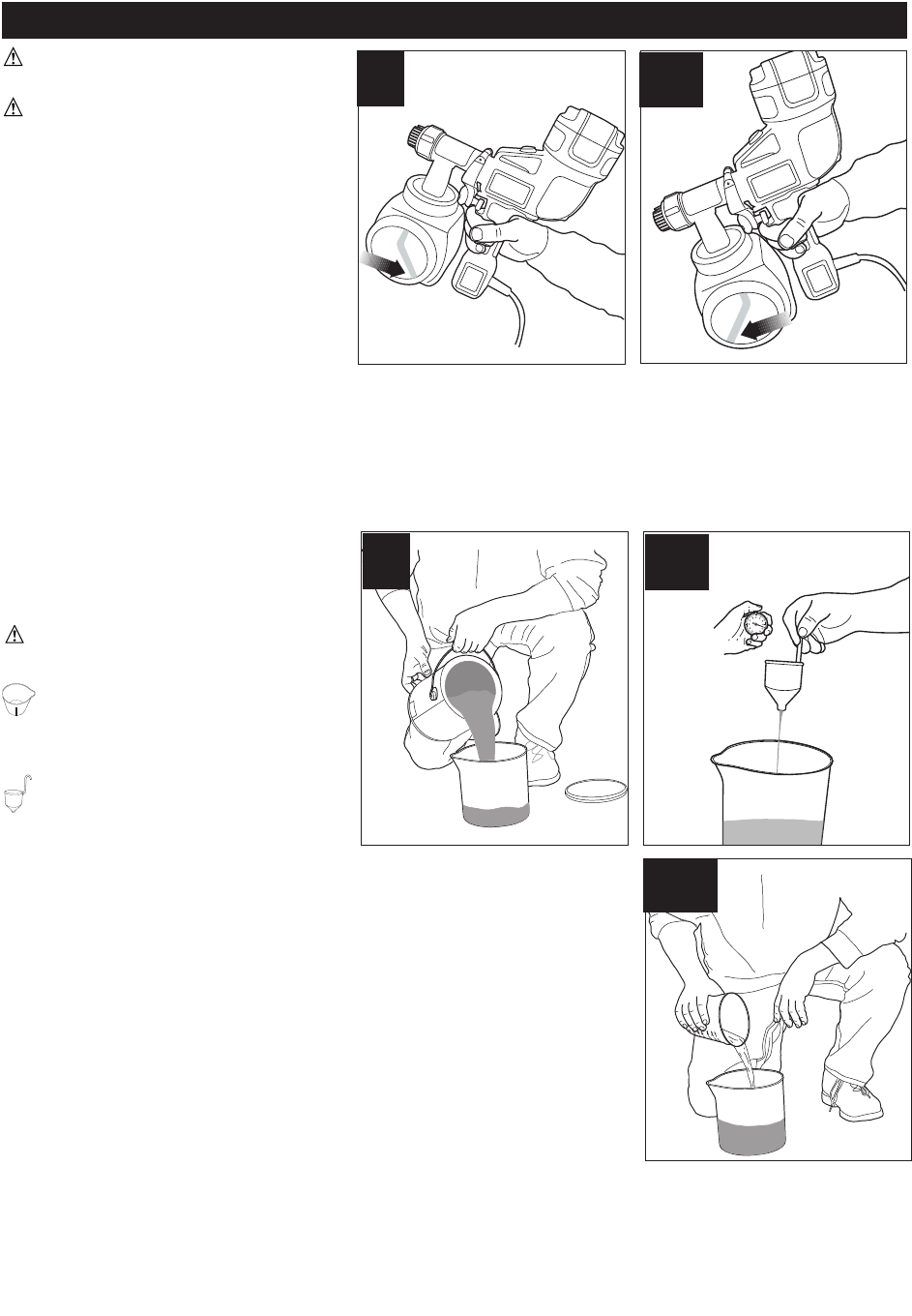
SET-UP
WARNING: Be sure to use appropriate
protective gear and unplug unit.
WARNING: Make sure area is well
ventilated and free of flammable vapors.
ALIGNING THE PICKUP TUBE -
(FIGURES B AND B1)
The pickup tube can be aligned in the
direction that you will be doing the most
spraying to help minimize the amount of times
that you will have to refill the canister.
• If you are spraying at an upward angle or
straight on, position the pickup tube
(figure B) toward the back of the canister.
• If you are spraying at a downward angle,
position the pickup tube (figure B1) toward
the front of the canister.
This will ensure you spray as much material as possible before you need to refill.
LIQUID MATERIAL PREPARATION - (FIGURES C, C1 AND C2)
TIP: Make sure the type of material you use can be cleaned with either mineral spirits or paint thinner (for
oil-based paints) or a warm water and soap solution (for water soluble paints like latex). Use drop cloths
during pouring, mixing, and viscosity testing of materials to be sprayed to protect your floors and anything
else in the spraying area that you wish to remain untouched.
The liquid being sprayed may need to be
thinned (diluted) before starting. When
thinning, use the proper liquid thinner
recommended on the container by the
material manufacturer.
WARNING: Do not use materials with
a flashpoint higher than 60°C ( 140°F) .
A 2-
3
/4 quart mixing bucket is provided
to use when transferring spray material
from the original container into the
bucket for thinning and measuring
purposes (figure C).
A viscosity test cup is provided to
determine the “runout time” of the mate-
rial being used.
• Before measuring for the proper viscosity,
stir the material thoroughly.
• Dip the viscosity cup into the material being sprayed and fill the cup completely.
• With the cup held over the material container, measure the amount of time it
takes for the stream of material flowing out to “break” or stop being a constant
stream out of the bottom of the cup (2 minutes or less) (figure C1). This is the
“runout time” Refer to the thinning table for information on the thinning required for
different materials.
• If material needs thinning, add the appropriate liquid thinning material
recommended by the manufacturer (figure C2).
• It is possible to spray latex paint with this unit, however, the required thinning may exceed material manufacturerʼs
recommendation. Thin latex paint so that it runs through viscosity cup in under 2 minutes. The operator should con-
sider the type of application and final location of the project when spraying a material that requires more than 2 min-
utes to run through the viscosity cup,
6
B
B1
C
C1
C2


















